Hatfield, UK: Last week, we spoke about our beadwork fair experience. This week I want to share with you my experience in creating my own polymer clay beads. The lady who showed us how to gave a free class. She is the Organiser of the Beadwork fairs all over the UK and is a polymer clay connoisseur.
She is wearing a necklace of a sunflower made out of polymer clay. Here was a chance to overcome my fear of using polymer clay because of its toxicity. When the lady explained that polymer clay needs to be baked at 110 degrees C, preferably over an aluminium foil, in order to avoid the toxic gases that are spewed out at higher temperatures.
Here are some samples that she had already prepared. She showed us three basic ways of making the beads and for a newbie to this technique, I must say I did pretty good.
The basics of working with this technique is take 3 slabs of different colours of polymer clay.
Roll them as shown. And then the fun begins.
Roll a round bead in the palm of your hand.
Technique 1: In order to get a swirly pattern, take a thin sausage of one colour and roll it on the round bead and then blend on the palm of your hand (where you blend in the palm will ensure a lentil shape beads or a round bead).
Technique 2: If you want a polka dot bead, take small blogs of the thin sausage and stick them on the bead (in my case it was the dark green polka dots and the main bead was a light green). Then once again, roll on the palms of your hands.
Technique 3: If you want the leopard skin looking beads, you need to surround the sausage (in my case light blue) with the white sausage that has been flattened like pastry and finally with the dark green pastry. These are then cut and stuck onto the main bead (which is not seen once the multi layered sausage is cut, so it could be leftovers from other projects). Then roll once again and voila!
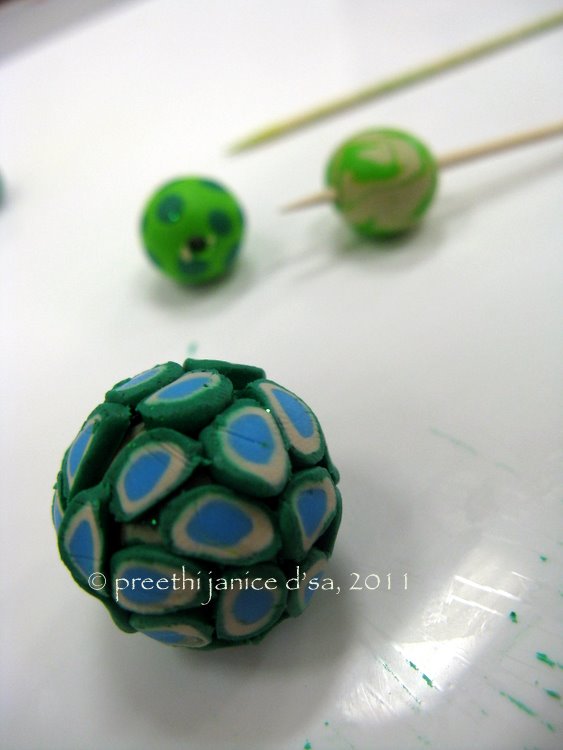
I've just finished sticking the multilayered sausage on the bead using Technique 3. Photo © Preethi Janice DSa
Making holes in the beads is a bit tricky. The trainer gave us a good idea. To swivel the toothpick through the centre of the bead as if you were screwing a nail. That helped in maintaining the bead size without distortion that would happen if you tried to mount the bead on the toothpick straight through.
The beads on the toothpick in the foreground of the photo was made by me. From left to right: the polka dot bead using technique 2, the leopard bead using technique 3 and the swirly patterned bead using technique 1. The beads in the background were made by a fellow polymer beader who kindly donated her beads. Note that she has squashed her beads into square ones.
After baking for the said time at the said temperature, the beads are as hard as can be. And the leftovers do not dry up. Given the stringent conditions I have to use for working with silver clay (and the raw materials are usually quite expensive. Leftovers dry up quickly due to the water content), polymer clay suddenly offers for me a cheaper alternative and a good way to experiment with before using expensive silver clay materials.
I made the mistake of not buying some fimo clay (the polymer clay brand). Oh well, my trip to Germany, the origin of the Fimo clay, may find myself stocking up for more experimentations.
And here questions of type such if honestly strike me not much as I wrote everything higher. It is visible you simply you don’t want to read all this. As my parrot does.



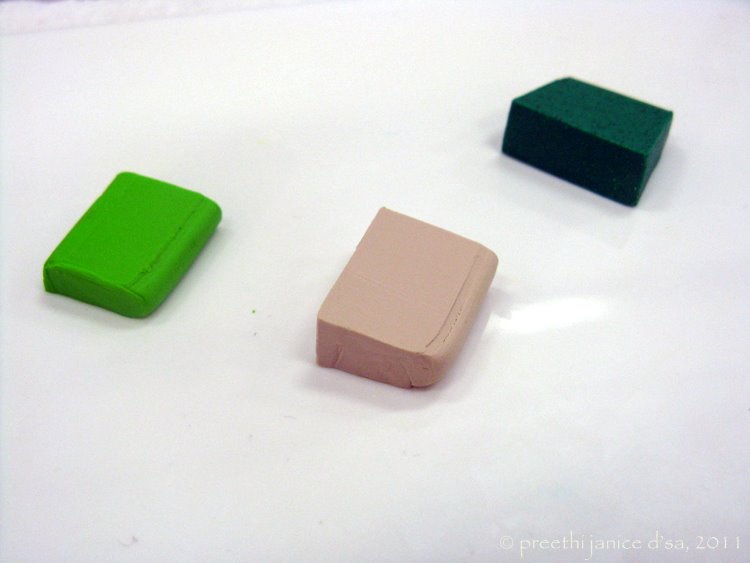
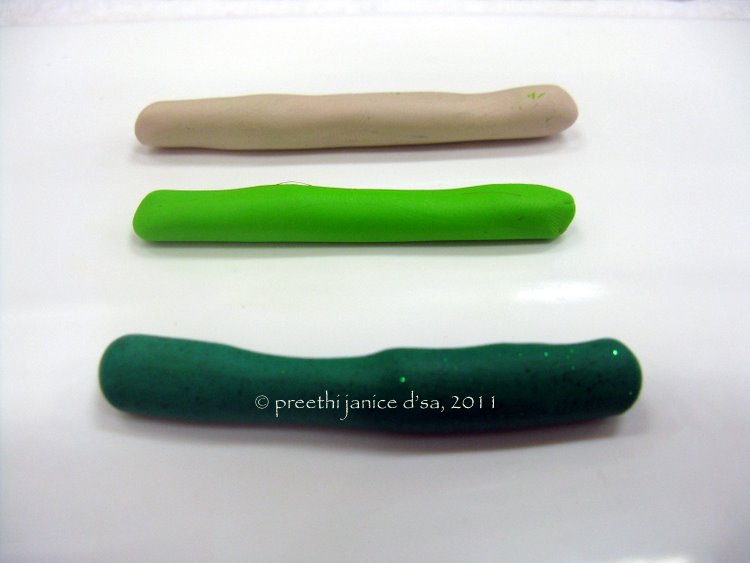
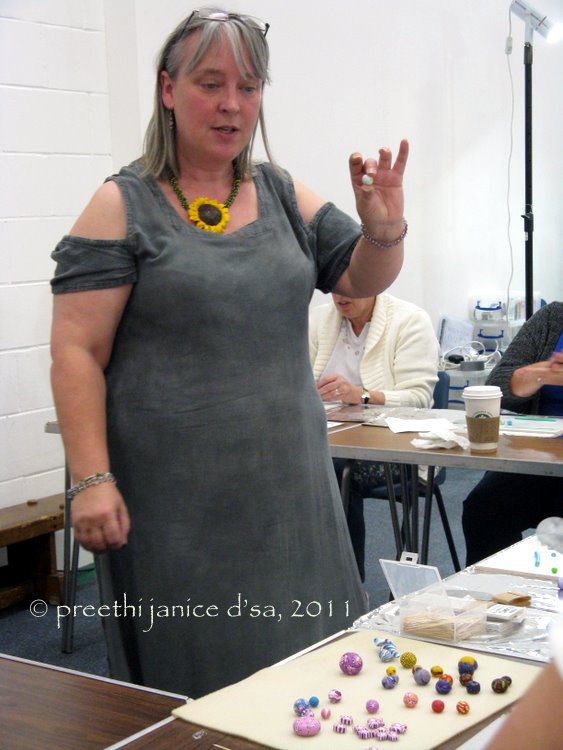

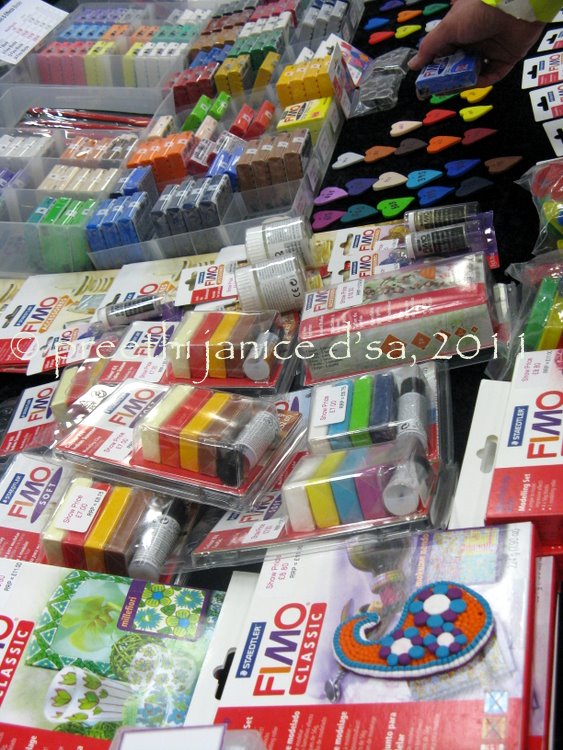
[…] 2012 – Since the blog post on my conquering my fear of working with polymer clay, I have created various polymer clay pendants and cufflinks. I enjoyed finding a cheaper solution […]